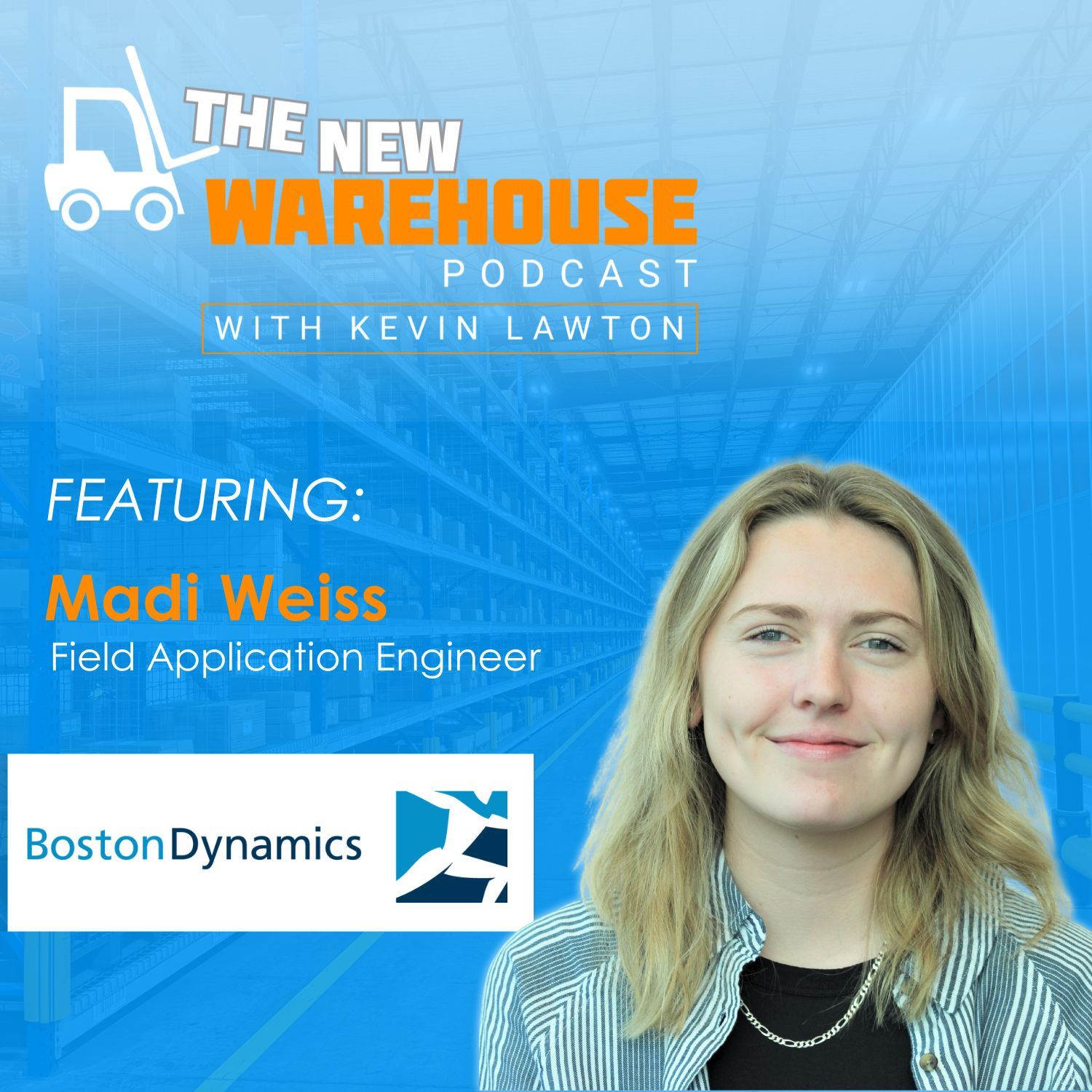
624: Bringing Robotics to the Warehouse Floor with Boston Dynamics
This episode features Madi Weiss, Field Application Engineer at Boston Dynamics. She discusses how robotics is transforming logistics and warehouse operations. Boston Dynamics, renowned worldwide for its innovative robots, has transitioned from viral videos to real-world industrial applications. With robots like Spot, Stretch, and the evolving Atlas, the company is delivering practical solutions for inspections, container unloading, and future warehouse automation.
Madi shares how these robots operate across various industries, including logistics, manufacturing, and the oil and gas sector. Their conversation highlights the rise of automation for the workforce and Boston Dynamics’ vision for the warehouse of the future.
Spot from Boston Dynamics: From Viral Dog to Industrial Inspector
Spot may be famous as the “little yellow robotic dog,” but today it’s a powerhouse for industrial inspections. “With Spot and all the payloads we can integrate onto it, we can do visual and thermal imaging, acoustic inspections, [and] remote investigations,” Weiss explained. These capabilities allow teams to catch early warning signs—such as equipment overheating or leaks—before costly downtime occurs. Logistics firms like Auto are using Spot for safety checks that go far beyond typical sensors. Weiss noted, “Checking for fire extinguishers, if doors are open, checking if there’s puddles on the ground…those are all super useful.”
Thanks to Spot’s AI visual inspections (AIVI), photos captured during patrols can now be analyzed in real-time to answer specific questions, immediately alerting managers to potential risks. Companies like Chevron, Anheuser-Busch, and Nestlé Purina have already adopted Spot, demonstrating how its flexible platform can adapt to various industries.
Stretch from Boston Dynamics: Tackling One of the Toughest Jobs in Logistics
While Spot is versatile, Stretch is purpose-built for one of the most demanding tasks in warehousing: floor-loaded container unloading. Released in 2022, Stretch combines a mobile base, a large robotic arm, and an advanced vision system to efficiently move boxes. “Stretch is really good at picking up boxes and putting them down repeatedly, over and over all day long,” Weiss explained. Unlike pallet-focused solutions, Stretch excels at unloading floor-loaded freight—a job long known for its grueling physical toll.
Early adopters, such as DHL, have already committed to deploying over 1,000 units. Weiss highlighted how quickly deployment has improved: “We could probably start talking to a new customer and have Stretch on their site in a few months, unloading boxes.” With the ability to process up to 1,000 cases per hour under optimal conditions, Stretch doesn’t just fill a labor gap—it redefines efficiency at the dock. It can even recover dropped boxes and pause automatically when conveyors are full, proving it’s as reliable as it is fast.
Robots and People: Building the Warehouse of the Future
The introduction of robotics raises questions about its impact on the workforce, but Weiss emphasizes that acceptance grows quickly. “Once people actually start working with them, they realize they’re just a tool that’s going to help them do their job better,” she shared. Stories from the field showcase how robotics can empower employees rather than replace them.
Looking ahead, Boston Dynamics envisions multi-robot warehouses where Spot, Stretch, and Atlas work in tandem with AGVs and other automated systems. “There are facilities right now where SKUs aren’t touched more than two or three times in their entire lifecycle…because of how much industrial automation is there,” Weiss explained. With some customers targeting lights-out warehouses by 2030, the vision of fully autonomous facilities is quickly shifting from concept to reality.
Key Takeaways from Boston Dynamics
- Spot enables AI-powered visual inspections, improving safety and reducing downtime.
- Stretch addresses floor-loaded container unloading at speeds up to 1,000 cases per hour.
- DHL’s commitment to 1,000 units highlights Stretch’s proven reliability and scalability
- Robotics enhances the workforce by transforming roles into supervisory and exception-handling tasks.
- Boston Dynamics anticipates heavily automated “lights out” warehouses as early as 2030
Listen to the episode below and leave your thoughts in the comments.
Guest Information
For more information on Boston Dynamics, click here.
To connect with Madi on LinkedIn, click here.

To Bot or Not: Lessons on Robotics from WERC 2025 » The New Warehouse
[…] 624: Bringing Robotics to the Warehouse Floor with Boston Dynamics […]
Warehouse Trends from The New Warehouse September 2025
[…] took center stage this month with practical breakthroughs hitting the warehouse floor. Boston Dynamics’ Stretch robot is tackling one of logistics’ toughest jobs, floor-loaded container unloading, at speeds up to […]